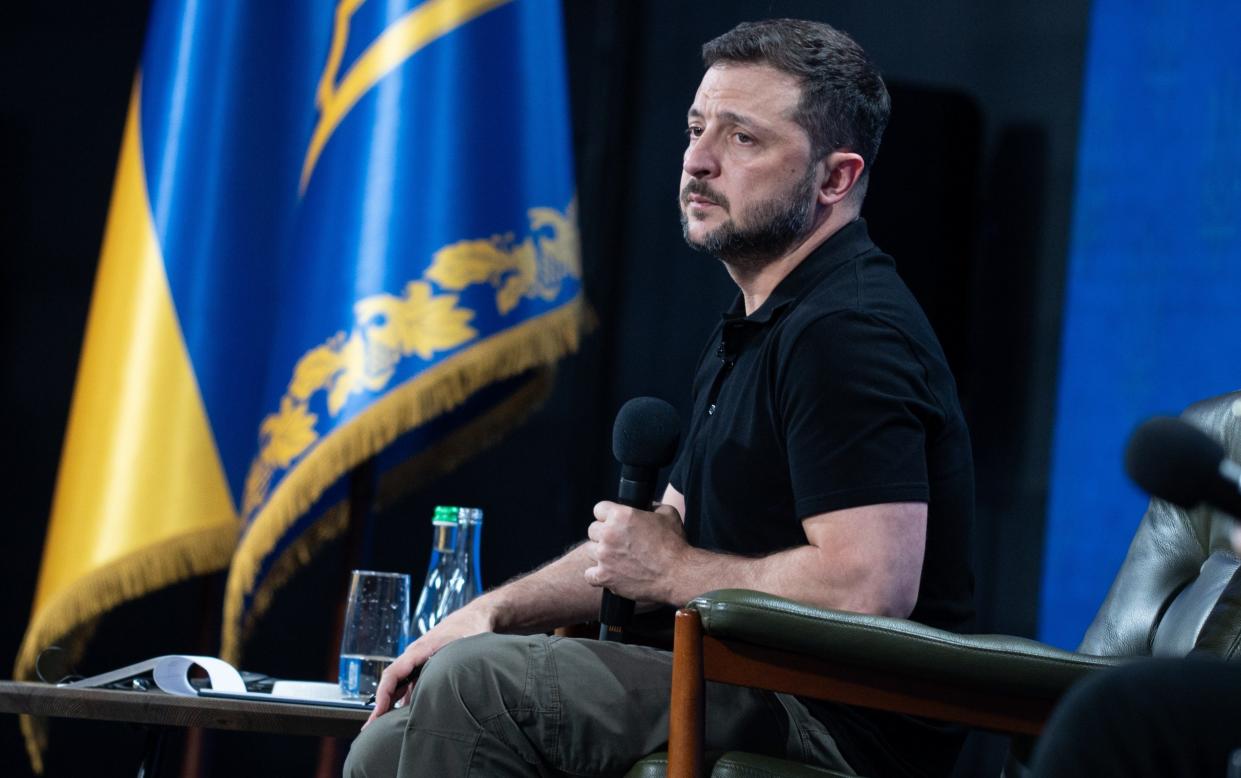UK backs Ukraine to strike Russia with Storm Shadow missiles

The UK backs the use of Storm Shadow missiles by Ukraine in Russia but will not publicly call for the move amid concern it would provoke a row with the US.
Volodymyr Zelensky has repeatedly asked to use the weapons, which can avoid enemy radar and hit precise targets up to 190 miles away, to strike deep inside Russia.
Despite confusion over the Government’s position, The Telegraph understands that Downing Street supports this.
However, the missiles are generally used alongside classified US systems, which requires the permission of Washington.
A formal request to the US has not been made for Ukraine to use the missiles inside Russia, but a Pentagon spokesman has previously said that the US is “concerned about escalation” when it comes to Ukraine’s use of long-range weapons.
White House sources said they also believed that many Russian targets were now outside the range of Storm Shadow missiles, so they may not be effective in the war against Russia.
Sir Keir Starmer is understood not to want to provoke a row over the issue and is said to be taking a “consultative approach” to negotiations with the US on the issue after previous diplomatic rows under the Tories.
A Whitehall source said “We want to have discussions with allies on these sorts of things rather than wanting to push on and do it.”
Click here to view this content.
The United States has privately bemoaned Britain’s front-foot approach to giving military equipment to Ukraine.
Earlier this year Grant Shapps, the former defence secretary, is understood to have pushed for Kyiv to strike Russian warships in Crimea, while America had been more cautious. The US government did ultimately provide ATACMS missiles that were used in Crimea.
Sources said at the time that British decisions to become the first Western nation to donate main battle tanks and the country’s push to deliver F-16 fighter jets had caused angst in Washington, with officials believing the UK was trying to bounce them into similar decisions.
The latter was blamed for the US’s refusal to back former defence secretary Sir Ben Wallace’s bid to become Nato secretary general. A White House spokesman said that claim was “nonsense” and that Mr Biden had always supported Mark Rutte for the role.
A senior military source said: “The US fear escalation more than we do because they have to deal with it. We don’t.”
The source added: “They, after all, would have to pick up the pieces. Little Britain cannot fight Russia.”
As well as fearing Storm Shadow strikes in Russia could lead to an escalation in the conflict, there are concerns in the US that the missiles may now not succeed in destroying Russian targets that have been moved away from the border.
The Whitehall source said: “It is also true that the Ukrainians put a lot of focus on a particular weapons group, and it’s a classic Zelensky tactic to push for something like this. The Russians have also got smart on this and the most critical assets have been moved out of range.”
On Tuesday, Sir Keir would not be drawn on whether Ukraine should be able to use the missiles to hit targets inside Russia.
The Prime Minister said: “I am not going to get into tactical questions about the use of weapons, for reasons that I know you’ll understand.”
However, he added: “We will stand with them for as long as it takes.”
The Telegraph understands that earlier this summer the Government asked the US to relent on its position and allow the weapons to be used inside Russia.
It comes as Mr Zelensky announced on Tuesday that Ukraine has carried out its first successful test-fire of a domestically-built ballistic missile.
Although the Ukrainian president did not release details of the test launch, Ukrainian engineers have been working on the development of a short-range ballistic missile to replace its Soviet-era Tochka-U system since 2014.
The programme was accelerated after Russia launched its first invasion of Ukraine’s eastern Donbas and illegally annexed Crimea in the same year.
The so-called Hrim-2 missile system, or Sapsan, is designed to hit targets at a range of about 300 miles and be fired from a truck-mounted launcher.
Fabian Hoffmann, a missile technology doctoral research fellow at the University of Oslo, said: “The successful test is good news, but we shouldn’t read too much into it.
The Sapsan SRBM is likely still several months if not years away from reaching initial operational capability.
“Nevertheless, as others and I have pointed out, if Ukraine is prohibited from using Western long-range strike weapons against targets inside Russia, it’s essential for Ukraine to develop its own higher-payload and higher-velocity missile systems.”


